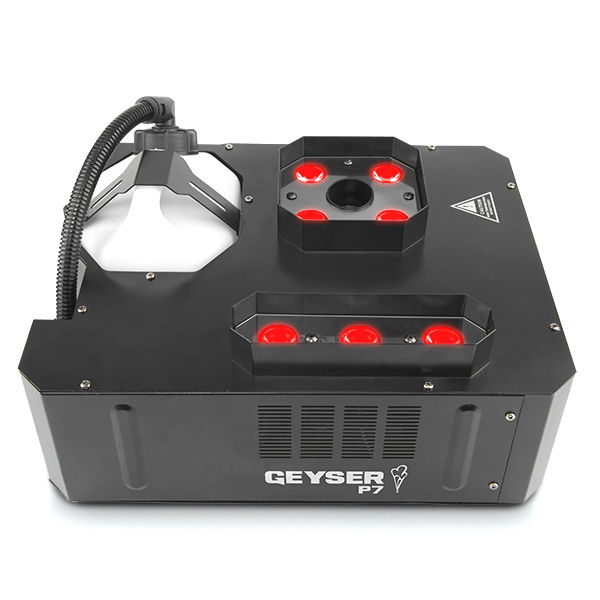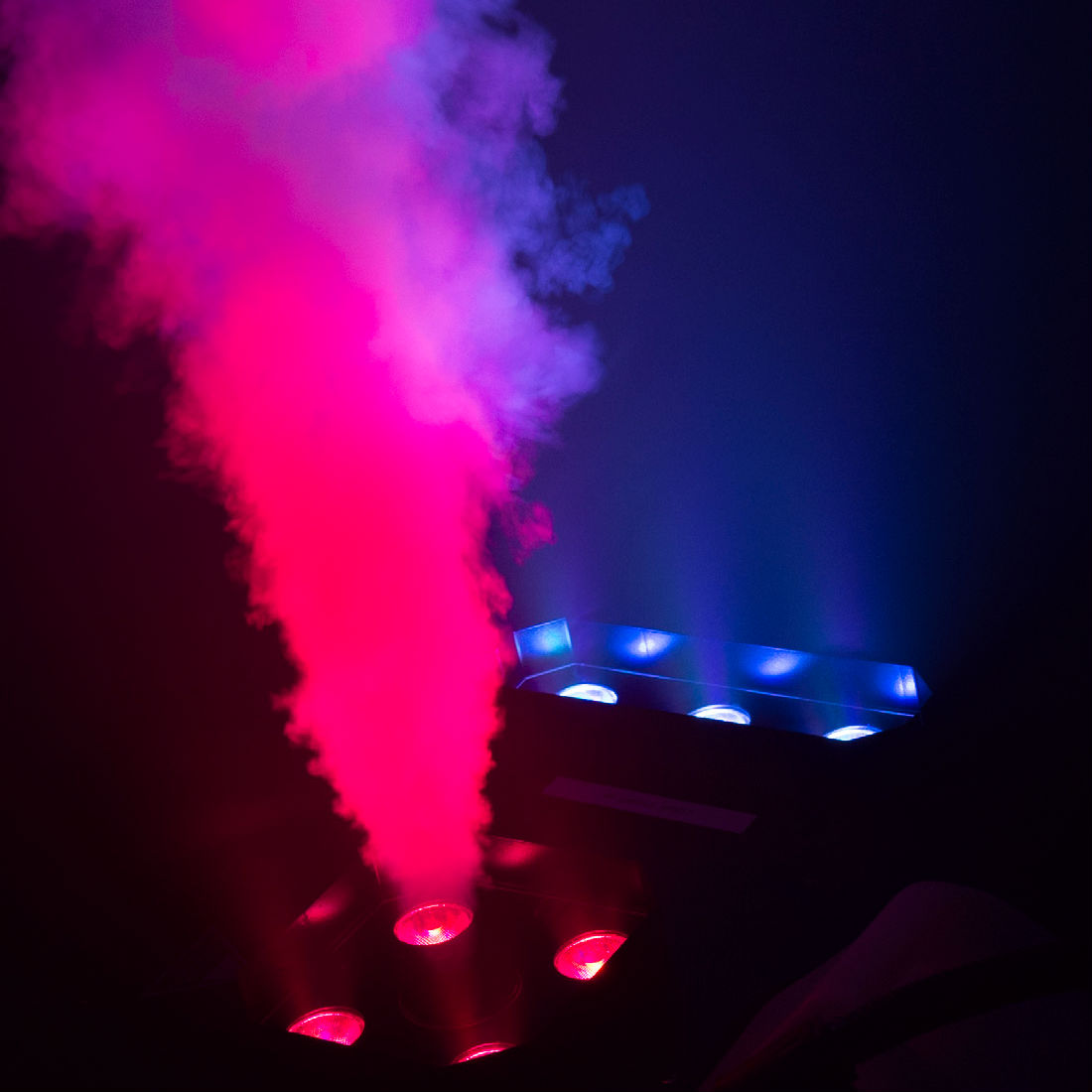That Ol' Blacklight Magic #3
We've discussed blacklights several times here, and even covered how blacklights and UV paints interact to create great looking special effects. This week, we're going to look specifically at blacklight paint -- how it works and how to get the most out of it.
First, allow me to recap the previous articles on how UV products work. UV-reactive products contain phosphors which are chemicals that convert energy into visible light. The inside of a fluorescent light bulb is coated with phosphors -- that's the weird powder that comes out if you break one. When the phosphors in a regular fluorescent tube are energized, they emit white light.
UV paints also contain phosphors. If you were to paint an entire room with UV paint and turn on a strong blacklight source, it would be like sitting inside of a huge fluorescent bulb! The important difference between the phosphors in a fluorescent tube and those contained in UV paint is that the phosphors in UV paint emit a specific wavelength (color) of light. This is how one can create incredible images that really do glow under the blacklight.
UV paints can be applied just like regular acrylic scenic paints. This means that you should first prime the surface you intend to paint with a non-fluorescent white primer. You don't have to do this, but it will improve the overall effect. As with all scenic paints, you will get the most even coverage by using a sprayer to apply the paint. You can also apply UV paints with brushes, rollers, sponges, all of the tools you would normally use in scenic painting. Finally, remember that water-based acrylic paints are translucent and multiple coats of paint will create a stronger effect.
An important note here, when mixing and painting with UV paints it is a good idea to work under UV light. The Wildfire paint on special this week is color-balanced during manufacture to ensure that the colors do not change from white to UV light. However, UV light is what creates the paints' glow, so working under a UV light will allow you to see how the effect will ultimately appear. Working under UV becomes especially important if you want to try more advanced paint techniques.
You can achieve some incredible effects by mixing UV paints. Regular colors of Wildfire paints can be mixed to create more subtle earth and flesh tones. You can also try mixing UV paint with non-fluorescent paint of a similar color. This allows you to control the amount of "glow" that an area of your painting has. For example, you could paint a cube and use full-strength Wildfire blue on the front, but mix in some non-fluorescent blue for the top, and even more for the side. The result would be that the front would glow the strongest under UV light, the top slightly less and the side even less. The appearance would be a very realistic "3D" cube! You can also mix Wildfire invisible paints with non-fluorescent paint to create colors that change under UV. For example, you could have a sky that changes from a pale blue to red under blacklight.
There's almost no end to the effects that you can create with UV paints. Since they've become more accepted in traditional theaters, as well as nightclubs and concerts, manufacturers are working hard to create new products that will produce even more spectacular results. If you're a scenic artist, or just interested in UV effects, the best way to learn is to pick up some paints and a blacklight and try it yourself!
*********************************************
Theatre Effects Customer Service Department
service@theatrefx.com
www.theatrefx.com
Theatre Effects, 1810 Airport Exchange Blvd. #400, Erlanger, KY 41018
Phone: 1-800-791-7646 or 513-772-7646 Fax: 513-772-3579









